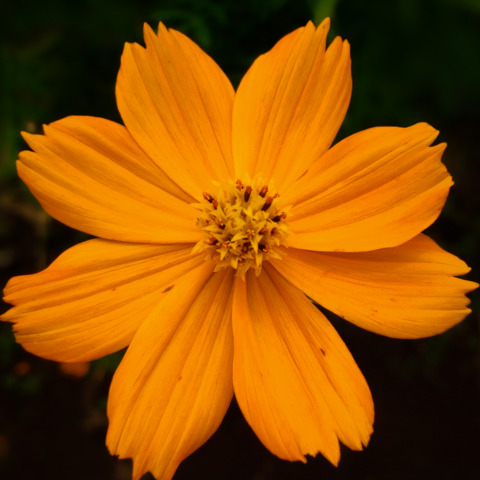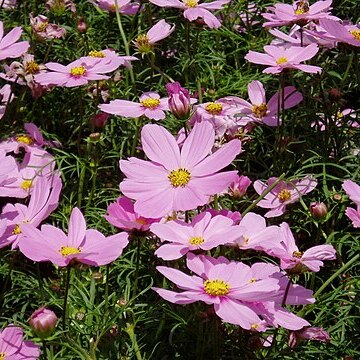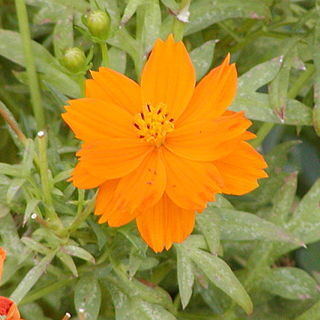Annual or perennial herbs, rarely somewhat woody. Lvs opposite, simple and entire to lobed or pinnatisect, or 1-3-pinnate. Capitula pedunculate, solitary or in loose cymes. Involucral bracts in 2 rows; outer row usually foliaceous; inner row membranous. Receptacle flat; scales present. Outer florets sterile, ligulate, usually rose or violet to purple, rarely orange, yellow or white. Inner florets ☿, tubular. Achenes all similar, usually fusiform, sometimes linear, ± square in section, sometimes compressed, not winged, attenuated into beak at apex; pappus 0, or of 2-8 awns, usually with retrorse barbs, sometimes with antrorse barbs or hispid.
Annual or perennial herbs, sometimes shrubs. Leaves opposite, pinnatisect or simple. Capitula terminal and solitary or in few-headed terminal or axillary cymes, radiate; involucre often fleshy at base, the phyllaries connate at base, 2-seriate with the outer leafy and the inner scarious; paleae present. Ray florets neuter; disc florets many, anthers with ovate or cordate apical appendage; style branches truncate, with caudate appendage. Achenes fusiform, and typically attenuate into a beak; pappus absent or of retrorsely barbed aristae
Heads radiate, the rays neutral, white to pink, red, or yellow; invol bracts biseriate and dimorphic, the outer subherbaceous, the inner membranous or almost hyaline; receptacle flat, chaffy, its bracts plane; disk-fls perfect; style-branches slender, flattened, with short, hairy appendage; achenes quadrangular, not much compressed, linear, beaked; pappus of 2–8 retrorsely or rarely antrorsely barbed awns; herbs with opposite, simple to pinnately dissected lvs and subhemispheric heads. 20, warm New World.



